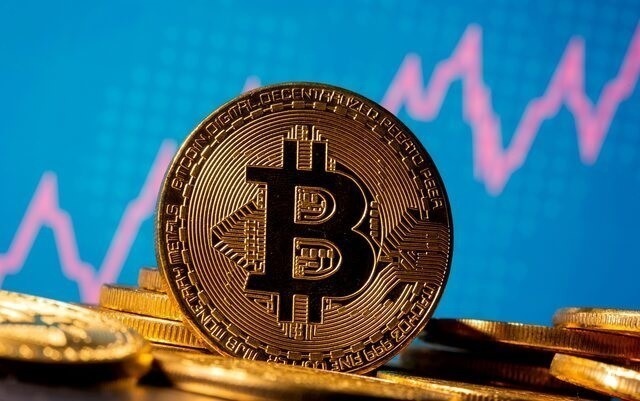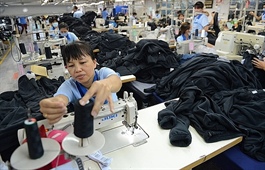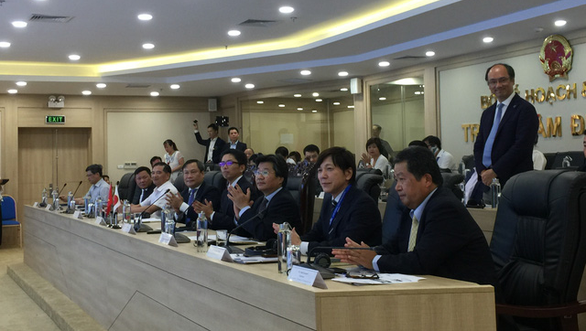Caution vital for economic resurgence
Caution vital for economic resurgence
Vietnam’s economy grew 1.81 per cent in the first half of 2020. Nguyen Minh Cuong, principal country economist from the Asian Development Bank, talked with VIR’s Thanh Dat about the country’s economic performance and prospects for this year.

Nguyen Minh Cuong, principal country economist from the Asian Development Bank
|
What is your evaluation of the six-month growth rate, in the context of many nations worldwide expecting to suffer from below-zero growth?
The Asian Development Bank Outlook Supplementary (ADOS) forecasts the GDP growth of Vietnam for 2020 is 4.1 per cent, and the forecast will be updated in September. The ADOS’s growth forecast for developing Asia in 2020 is 0.1 per cent in 2020, 1.3 per cent for East Asia, -3 per cent for South Asia, and -2.7 per cent for Southeast Asia.
Against this backdrop, the 1.8 per cent growth of Vietnam in the first six months of the year is positive. Vietnam has encountered COVID-19 at a time when the economy was on a strong growth trajectory for almost four years, particularly in 2018 and 2019 when the country experienced stellar growth of 7 per cent and above. In 2019, the total trade reached $500 billion with $11 billion trade surplus.
Inflation was under control, and exchange rate was stable. The public debt to GDP ratio was tamed at 54.7 per cent. This strong growth impetus has helped cushioned the impact of the COVID-19 in the first quarter of the year, which saw growth at 3.8 per cent in the first quarter.
When the growth momentum was dying down in April due to restrictions, Vietnam’s successful containment of the COVID-19 allowed the lifting of social distancing at the end of April. This swiftly restored the domestic market, which has helped sustain growth momentum in the second quarter of 2020, though at a low level of 1.8 per cent.
Vietnam’s industrial production has resumed its momentum since May. Can that momentum keep on track in the second half of the year?
Industrial production contracted sharply in April and recovered some strength in May and June. However, the full recovery of the industry, particularly export-driven manufacturing, would largely depend on the external environment which is still deteriorating with no quick upturn in sight yet. Also, the impact of COVID-19 and the pace of recovery among subsectors of the industry vary.
While textiles fell sharply, production of phone accessories and food processing maintained strong growth, largely due to increasing demand for electronic devices as people began to increasingly work from home across the globe. Also, revived local consumption of food was seen in Vietnam after the lifting of social distancing regulations.
What will continue to be the economy’s key growth pillars into next year and why?
Vietnam needs to be cautious over any possible resurgence of COVID-19. The government has contained it well, but the risks still loom large given Vietnam’s high level of economic integration with other countries. Premature attempts to open the economy without prudent measures may result in the outbreak returning. Among others, there are two main growth drivers in 2020. Firstly, as the outbreak has been contained domestically, it has effectively revived the domestic market, a crucial factor maintaining growth in 2020. As soon as social distancing was lifted, retail sales climbed up 6.4 per cent in June on a monthly basis. Passenger transport soared by 13.4 per cent in June, reflecting the revived domestic tourism.
The local market would therefore help offset partly the gap from the weakening external market.
Secondly, the disbursement of VND700 trillion ($30.43 billion) of public investment would significantly support growth. In the first six months of 2020, VND153 trillion ($6.65 billion) has been disbursed. Public investment would have a multiplier impact on growth. It could support revival of construction industry, generating jobs and income, and providing liquidity to the market in the short-term, building the needed infrastructure to sustain growth in the medium and long term.
For 2021, Vietnam would gain from the reallocation of foreign direct investment and trade flows as well as the reconfiguration of the global and regional value chains. Concerns over future eruptions of value chains caused by unprecedented natural disasters and/or health pandemics, and increasing geopolitical uncertainties, have promoted multinational corporations to reconsider their business strategies.
What should be done for Vietnam to hit higher growth this year, at about 4 per cent as expected by the government?
To maintain growth in 2020, it is important to boost the government’s economic measures, especially the implementation of the fiscal support programme. Accelerated disbursement of the public investment is among the most crucial measures to uphold growth in 2020. Revived domestic market would also support growth.
Finally, it is important to identify an appropriate financing mechanism to support affected SMEs. The commercial banks have extended most of the possible measures to affected firms. However, the banks’ flexibility is constrained as they have to comply with required financial due diligence. A credit guarantee system for SMEs can therefore be considered.


























